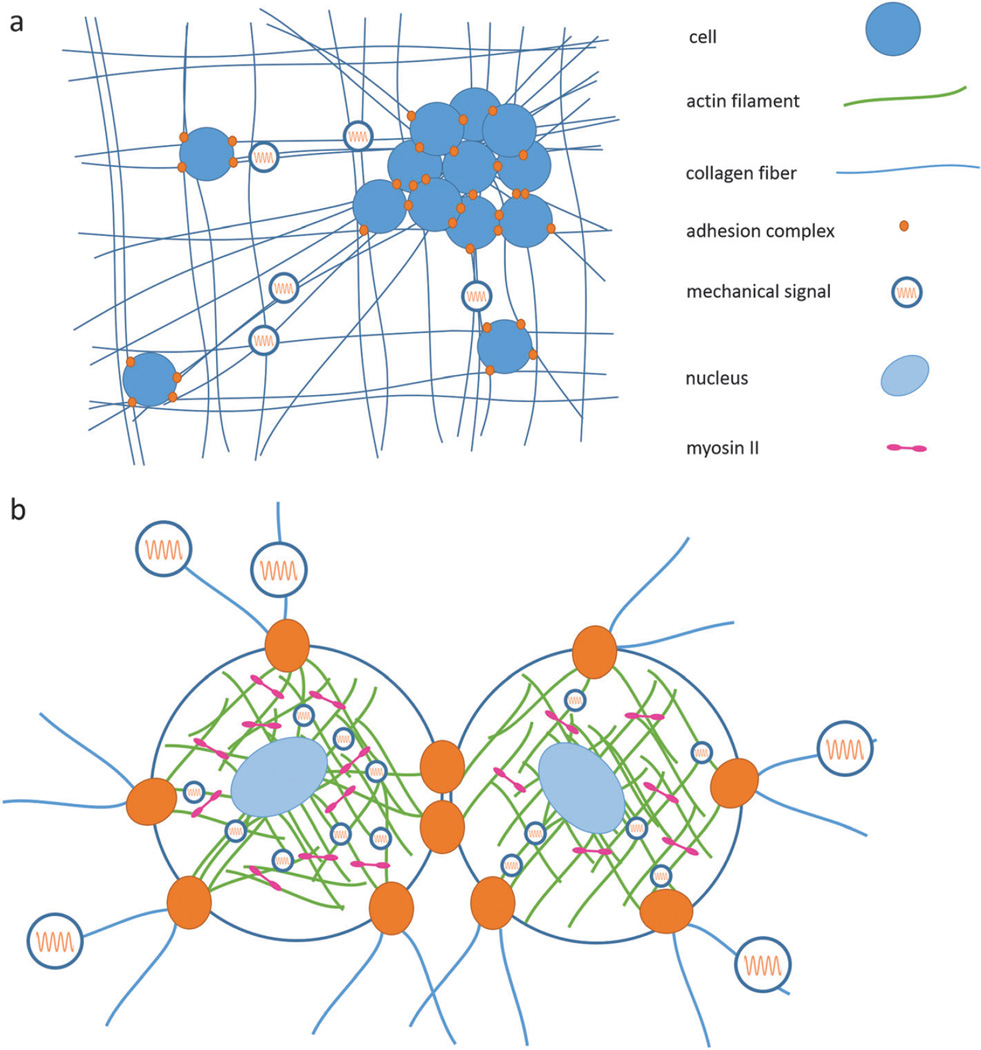Fig. 4.
Mechanical signals, in the form of force and spatial distortions, are generated by cells and molecular motors. The soft, fibrillar ECM and cytoskeleton are the mechanical wiring networks in which these signals are transmitted, and adhesion complexes enable bidirectional transduction between the two environments. The cell nucleus is also directly connected to this mechanical circuit. (a) Single cells and cell aggregates exert contractile forces on the ECM, propagating signals to distant cells and generating matrix alignment. (b) Expanded view of two connected cells illustrates the connections between a cell and its neighbor and the ECM via adhesion complexes, which act to transmit mechanical signals both inside-out and outside-in. Inside the cell, molecular motors such as myosin II contract the intracellular matrix made of crosslinked actin filaments. The actin cytoskeleton is further connected to the nucleus via the LINC-complex, enabling direct force transmission to the nucleus.

